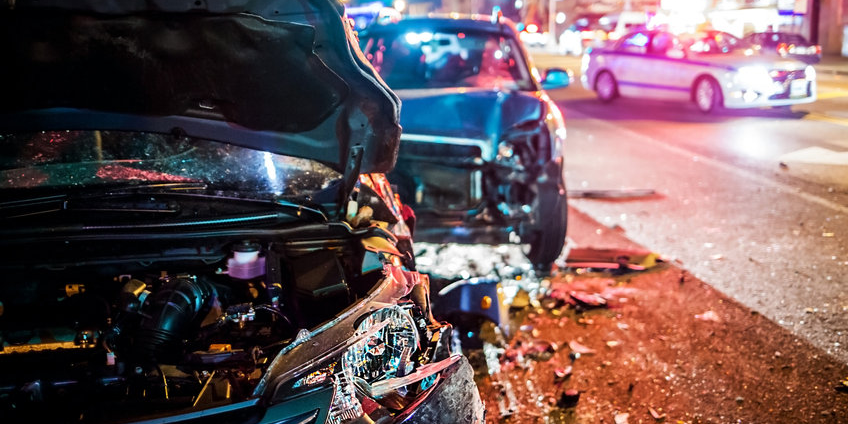
Distracted driving is responsible for about 3,000 deaths each year. Knowing how to treat patients in such crises — and paying special attention to potential airway problems — is essential for providing proper care.
Responding to Vehicle Accidents
When responding to the scene of a vehicle accident, you should follow three steps to ensure the safety of all involved.
- Evaluate the Scene: Before proceeding to the scene, assess the situation. Doing so allows you to plan your course of action and determine what precautions and equipment are needed.
- Coordinate Triage: One of the most common mistakes made at crash scenes is treating patients on a first-come, first-serve basis. This often leads to low-priority patients receiving care while those that are critically injured remain unattended.
To combat this, all personnel should be aware of and follow the triage system in place. This ensures the most critical patients receive care first and increases the likelihood of positive outcomes for all involved in the crash.
- Treat Patients: Those involved in vehicle accidents can suffer traumatic injuries that make airway management difficult. Some of the most serious are:
- Spinal cord injuries
- Traumatic brain injuries
- Chest injuries
Knowing how to properly manage the airways of patients who sustain these critical injuries is paramount to providing effective care in the tense moments following an accident.
Managing the Airways of Patients in Vehicle Accidents
- Spinal Cord Injuries: Patients who suffer a spinal cord injury (SCI) from a vehicle accident should be immobilized to prevent further damage, and the jaw thrust maneuver, which is easier on the spine, should be used to open their airway. Following this, patients may only need to have their airway propped open with an oral airway tool.
However, some SCI patients will need to be intubated. Unfortunately, SCIs often lead to large amounts of blood and vomit, making intubation more difficult. In these situations, the SALAD (Suction Assisted Laryngoscopy and Airway Decontamination) technique should be used to clear the airway and visualize the vocal cords during intubation. While this technique is compatible with virtually any suction device, it is most effective with the rigid SSCOR SDC Catheter™ (Formerly the SSCOR DuCanto Catheter®), which was uniquely designed to carry out SALAD.
- Traumatic Brain Injuries: Ensuring adequate oxygenation should be the first step for patients with traumatic brain injuries (TBIs), as this preserves tissue, reduces swelling, and helps defend against secondary injuries. Immobilization should also be considered for TBI patients to stabilize them and prevent further injury.
TBI patients are prone to aspiration or hypoxia, as they may not be able to protect their airways from blood, secretions, or vomit. In these situations, use a portable suction unit and catheter to clear the airway, and perform the SALAD technique if intubation is required.
- Chest Injuries: Common chest injuries sustained during a vehicle accident are sternal fractures and flail chest. If these injuries are present, the patient should be provided oxygen and immobilized to prevent further injury. If a patient with these injuries is in respiratory distress, positive-pressure ventilation should be performed with a bag-valve mask to reduce the risk of hypoxia. Additionally, endotracheal intubation may be necessary if a patient goes into respiratory failure.
As with all cases requiring airway management, reliable suction is likely to be necessary, particularly if the chest trauma causes injuries to the lungs. That scenario can also lead to the patient aspirating blood, which requires prompt and consistent suctioning.
Be Prepared
Vehicle accidents can lead to a variety of injuries in patients, many of which complicate airway management. With more than five million Americans involved in car accidents each year, it’s a situation you should expect to encounter and one you should prepare for. Having the proper equipment on hand, and being ready to perform the SALAD technique will help you handle the range of injuries sustained in these accidents.
















